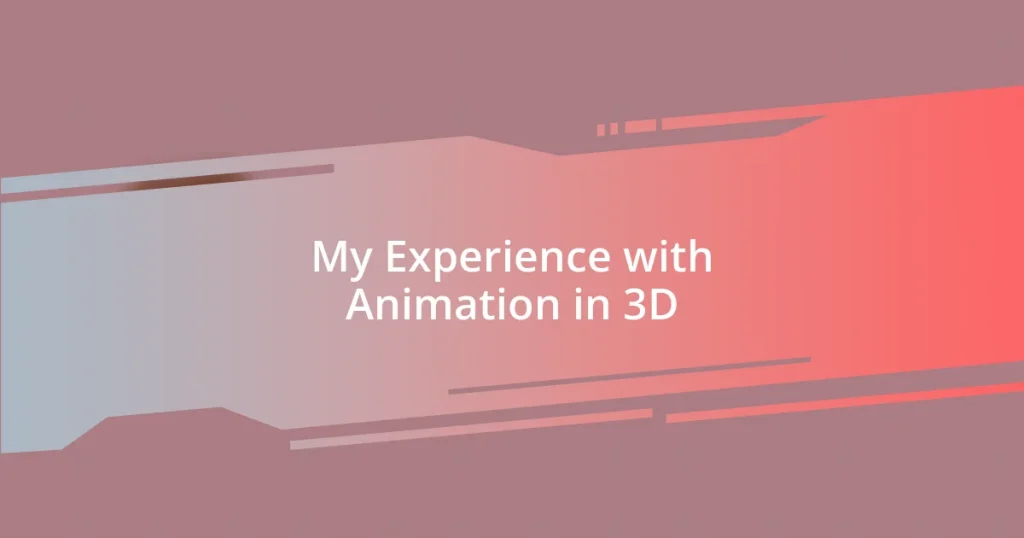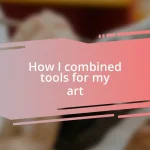Key takeaways:
- Mastering key techniques like rigging, texturing, and lighting transformed the author’s animations, enhancing storytelling and character authenticity.
- Embracing failure and networking with fellow creatives were pivotal in the author’s growth, fostering resilience and new perspectives.
- Future aspirations include exploring virtual reality for enhanced audience engagement and collaboration with diverse artists to create meaningful narratives.
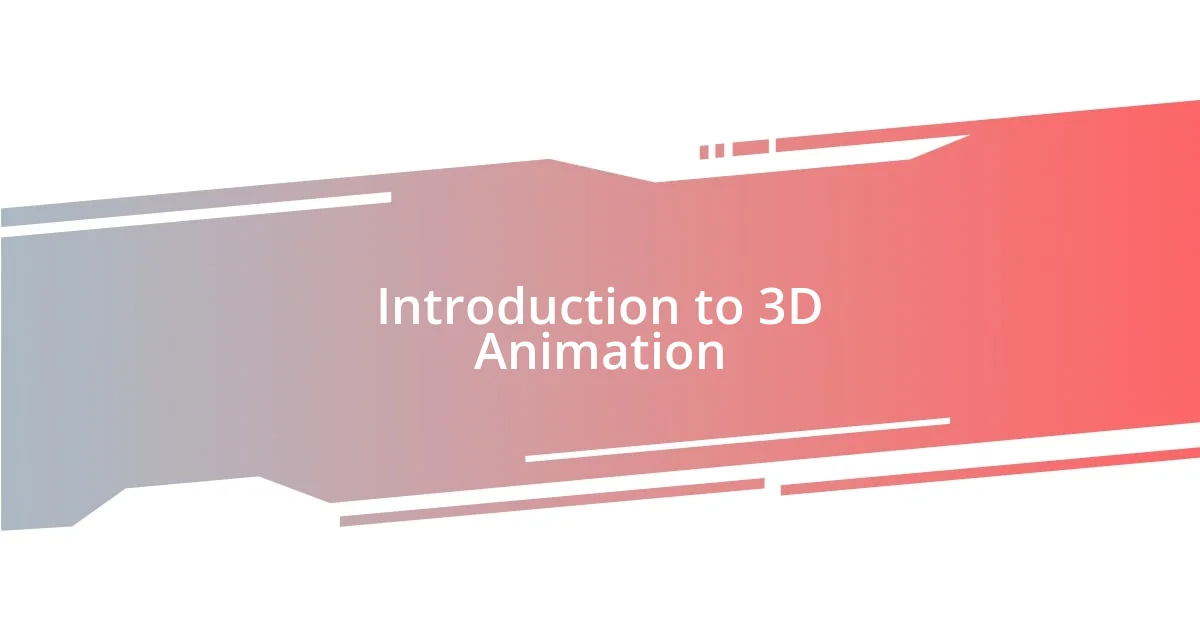
Introduction to 3D Animation
Diving into the world of 3D animation can feel like stepping into a vibrant new reality. I vividly recall the first time I manipulated a 3D model; it was as if I had unlocked a secret code to creativity. Have you ever felt that exhilarating rush when your digital creations begin to come alive?
In 3D animation, you’re not just telling a story; you’re constructing an entire universe filled with endless possibilities. For me, discovering the intricacies of texture and lighting led to those “aha!” moments that kept me glued to my screen for hours. Isn’t it fascinating how a simple adjustment can drastically change the mood of a scene?
This field bridges art and technology, enabling artists to express their vision in dynamic and compelling ways. Reflecting on my journey, I realize how the challenges I faced ultimately fueled my passion. Each setback taught me valuable lessons that transformed the way I approach animation, making the process all the more rewarding. Don’t you agree that each misstep can lead to unexpected creativity?
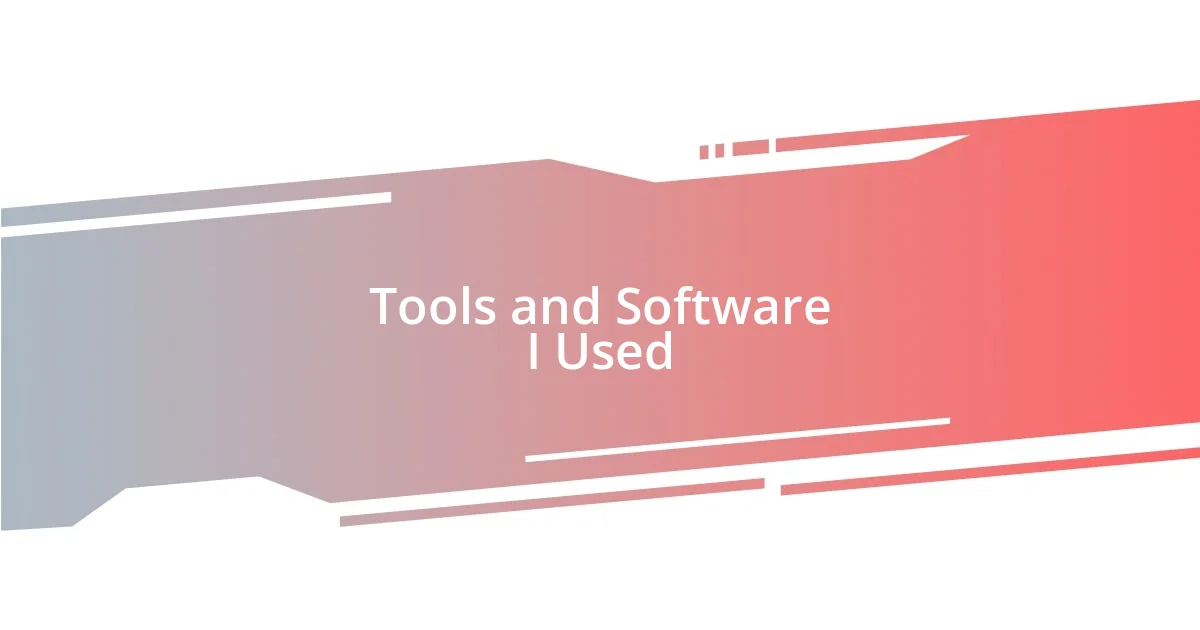
Tools and Software I Used
When it comes to 3D animation, the tools and software I used played a crucial role in shaping my creative journey. My favorite has to be Blender; it’s free and open-source, which I found particularly liberating. I still remember my first day using it, feeling an overwhelming mix of excitement and intimidation as I navigated its vast features. Have you ever had that moment where you thought, “Wow, look at all the options!”?
Alongside Blender, I occasionally turned to Autodesk Maya for more complex projects. It’s an industry standard with a steep learning curve, but the results can be stunning. I’ll never forget how an animation I created in Maya received praise at a local showcase—my heart raced as I watched others interact with my work. It felt like sheer magic.
Lastly, I dabbled with Unity for 3D animation in game development. While not strictly an animation tool, integrating animations into my projects there expanded my understanding of how movements can enhance gameplay. Seeing my characters leap and twirl in a virtual space was truly exhilarating and gave me a fresh perspective on storytelling through animation.
| Software | Key Features |
|---|---|
| Blender | Free, open-source, comprehensive tool for modeling and animation |
| Autodesk Maya | Industry-standard software with advanced features for character animation |
| Unity | Game engine integration, supports 3D animation for interactive experiences |
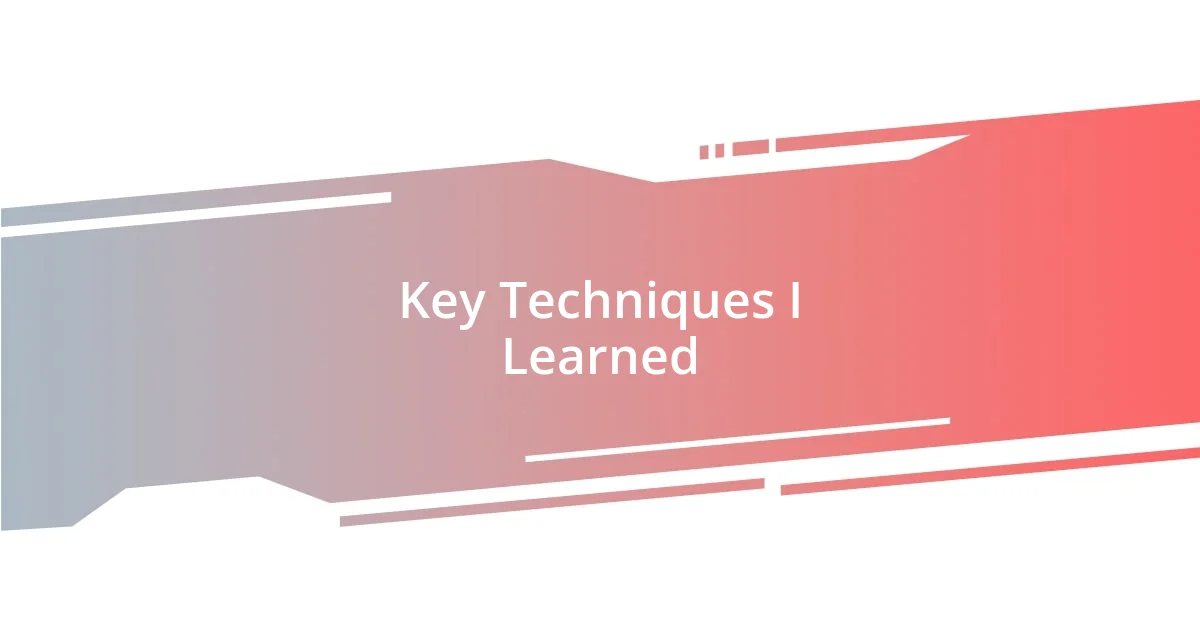
Key Techniques I Learned
Understanding 3D animation means mastering a variety of key techniques that elevate your work from basic to breathtaking. One moment that stands out is when I learned about rigging – the process of creating a skeleton for my models. I was initially overwhelmed, but there’s a magical thrill in watching your characters move authentically once rigged. Imagine the satisfaction of seeing your creation perform a flawless dance after hours of tweaking; it’s a rush like no other!
As I progressed, I honed my skills in texturing and shading. These techniques transformed flat surfaces into realistic materials, allowing me to play with light and shadow shapes. It was like painting with pixels! Here are some key techniques I found invaluable along the way:
- Rigging: This allows characters to move fluidly, giving life and personality to models.
- Texturing: Adding color and detail surfaces transforms the ordinary into something remarkable.
- Lighting: Proper lighting sets the mood and enhances the story being told through animation.
- Animation Principles: Techniques like squash and stretch brought a sense of realism to movements that made me giddy with excitement.
- Camera Angles: Strategic framing added dramatic flair, making the viewer feel involved in the unfolding story.
Each of these techniques played a pivotal role in shaping my approach and enhancing the depth of my animations, allowing my thoughts and stories to resonate more profoundly with the audience.
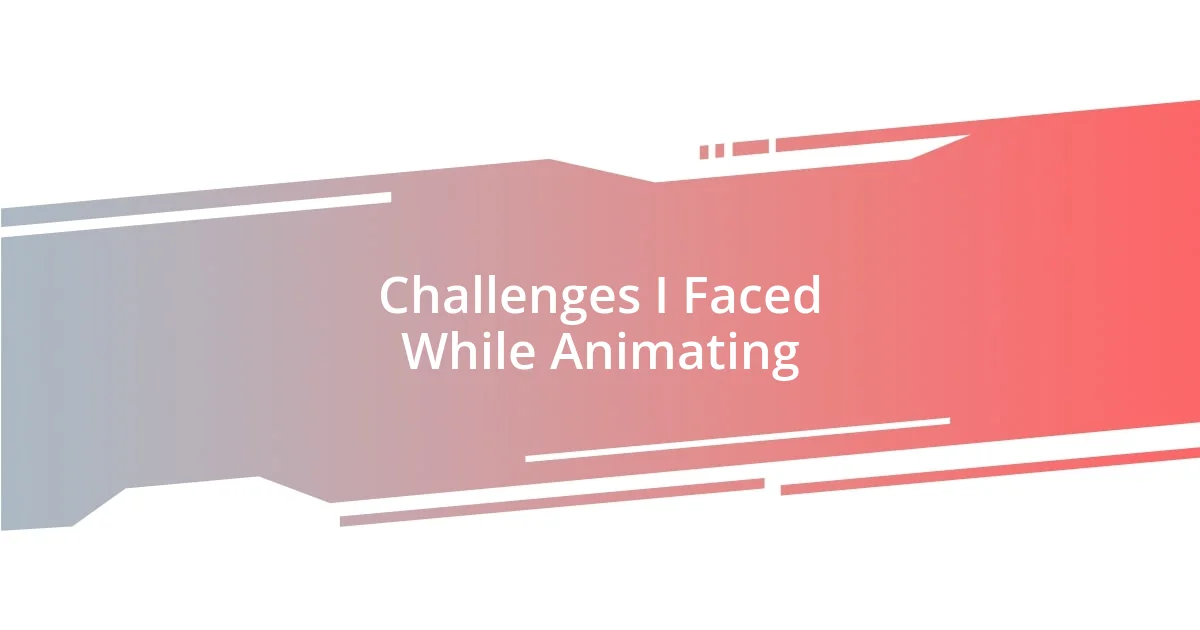
Challenges I Faced While Animating
One of the significant hurdles I faced while animating was mastering the timing and pacing of movements. I remember feeling frustrated when my first animation looked robotic and lifeless. It was a true “aha” moment when I realized that subtle variations in speed made all the difference. Have you ever experienced that eureka feeling when everything clicks into place? It felt like discovering a secret recipe, and suddenly, my characters had personality and fluidity.
Another challenge I encountered was keeping track of countless layers and keyframes. At times, I felt overwhelmed, like I was trying to solve a complex puzzle with too many pieces. I learned to organize my workflow meticulously, using color-coding and clear naming conventions. This small shift saved me from headaches later on and allowed me to focus on creativity rather than getting lost in a sea of information.
Lastly, I grappled with the technical side of rendering. Waiting hours for a single frame made me question my sanity! It tested my patience in ways I hadn’t anticipated, but I learned to embrace it as part of the process. The end result—seeing the final animation come to life—was always worth the wait. Can you relate to the anticipation that builds up while waiting for your hard work to showcase itself? It creates a suspenseful thrill that validates every ounce of effort you put in.
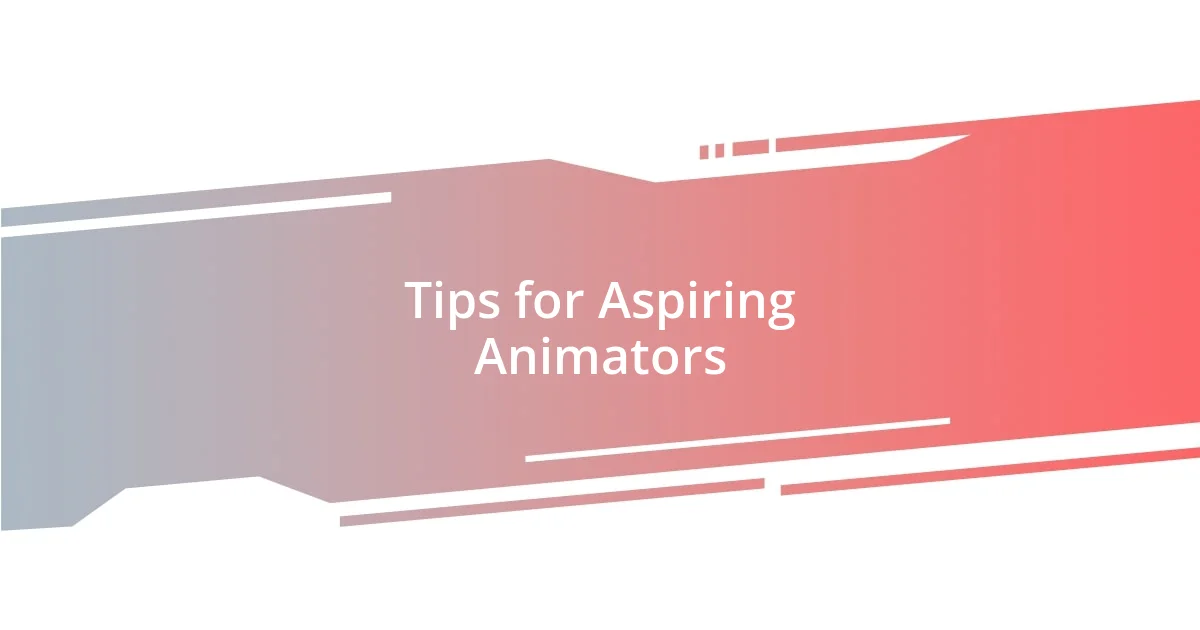
Tips for Aspiring Animators
When I first dipped my toes into animation, one of the best pieces of advice I received was to embrace failure. I still remember spending days on a project only to realize it fell flat. Instead of seeing it as a setback, I reframed my perspective—every failure was a stepping stone to improvement. Have you ever had that moment when you learned more from a mistake than from success? I did, and that realization made all the difference in my creative journey.
Networking is another crucial tip for aspiring animators. Early on, I neglected the power of connection, thinking that talent alone would carry me through. However, attending workshops opened up a world of inspiration and feedback. I vividly recall the excitement of engaging with fellow creatives whose perspectives pushed me to think outside the box. It made me wonder: how often do we miss opportunities for growth simply because we shy away from collaboration? The friendships and insights I gained have been invaluable.
Lastly, I encourage aspiring animators to develop a routine that fosters creativity. For me, sketching ideas each morning served as a warm-up to get my creative juices flowing. It might sound simple, but creating that daily habit cultivated a mindset that welcomed experimentation and innovation. Have you found activities that spark your creativity? Discovering what ignites your passion can lead to amazing breakthroughs in your work. Developing your unique process is an adventure worth embarking on!
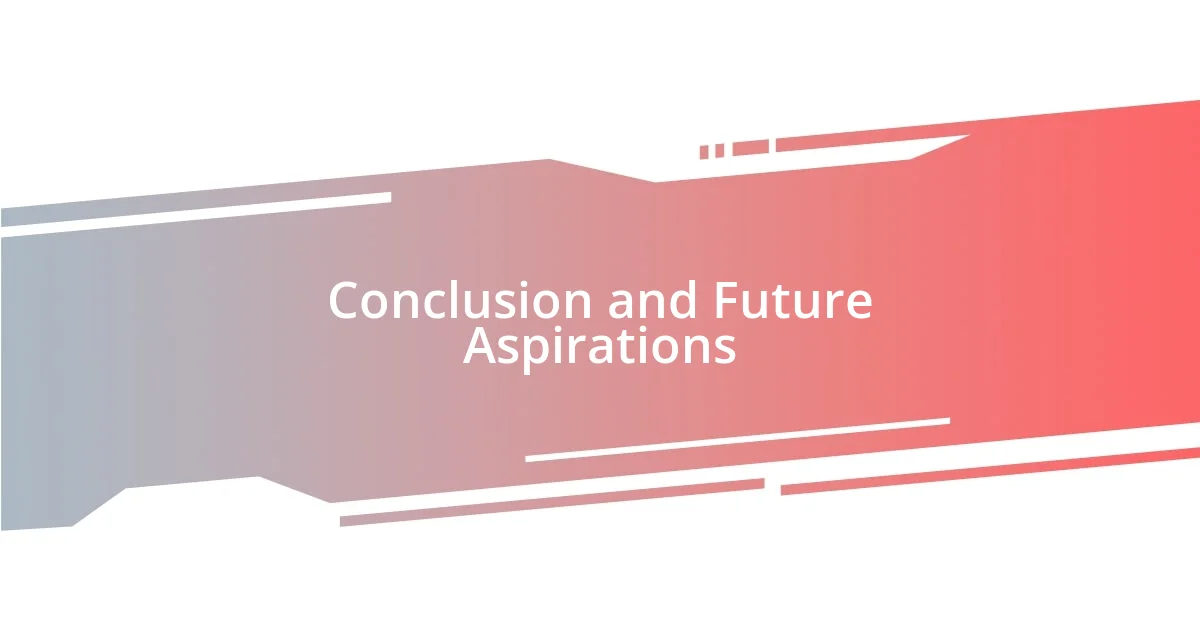
Conclusion and Future Aspirations
As I reflect on my journey through 3D animation, I realize it’s been a blend of challenges and rewards that have shaped my artistic vision. The process wasn’t just about creating motion; it was about understanding the emotional language of my characters. I often think about how each animation encapsulates a story, inviting viewers into a world shaped by my experiences and aspirations. Isn’t it fascinating how personal narratives can breathe life into digital forms?
Looking ahead, I aspire to push the boundaries of my creativity further. I have a dream of experimenting with virtual reality, where animators can immerse audiences in entirely new dimensions. I remember the first time I tried on a VR headset—it felt like stepping into another universe. How thrilling would it be to create worlds where viewers aren’t just spectators but active participants? This possibility fuels my excitement and drives my ambition to learn more each day.
Moreover, I see a bright horizon for collaboration in animation. I envision working alongside other artists and storytellers from diverse backgrounds to create meaningful narratives that resonate universally. The idea of intertwining different perspectives creates a tapestry of creativity that can speak to a wider audience. Have you ever thought about the magic that unfolds when different minds unite? It’s an inspiring concept that drives me as I look to the future of my animation journey.










